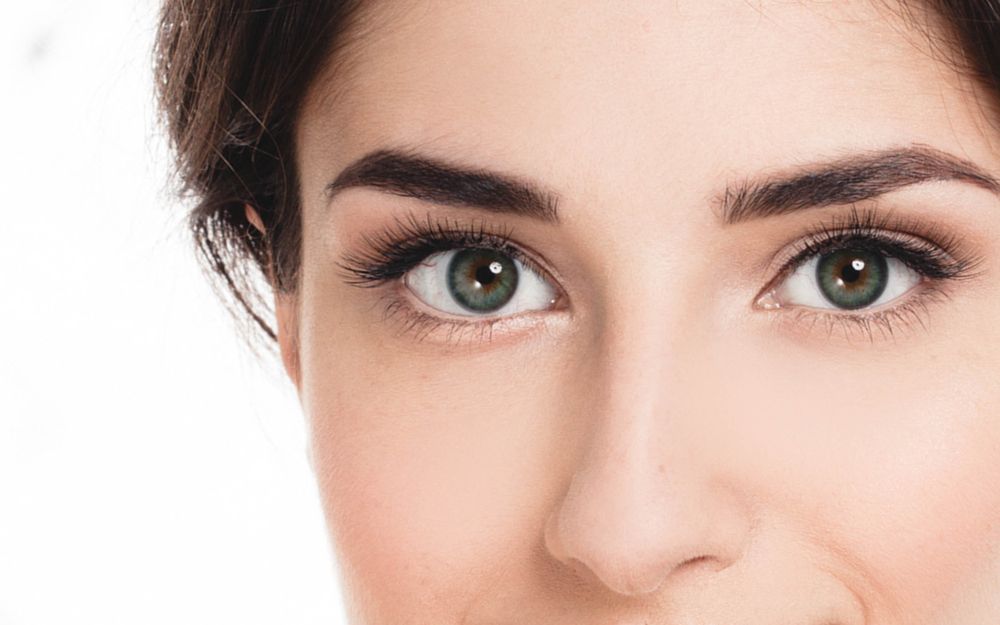- Case-Based Roundtable
- General Dermatology
- Eczema
- Chronic Hand Eczema
- Alopecia
- Aesthetics
- Vitiligo
- COVID-19
- Actinic Keratosis
- Precision Medicine and Biologics
- Rare Disease
- Wound Care
- Rosacea
- Psoriasis
- Psoriatic Arthritis
- Atopic Dermatitis
- Melasma
- NP and PA
- Skin Cancer
- Hidradenitis Suppurativa
- Drug Watch
- Pigmentary Disorders
- Acne
- Pediatric Dermatology
- Practice Management
- Prurigo Nodularis
- Buy-and-Bill
Publication
Article
Dermatology Times
Dermatologist discusses permanent eyeliner, microblading
Author(s):
In this Cosmetic Conundrums, Dr. Draelos answers questions about the safety of eyelid glitter, permanent eyeliner and microblading.
(©Irina Bg/Shutterstock.com)

Dr. Draelos

Q. Can the currently fashionable eyelid glitter cause problems with contact lenses?
Glitter is everywhere, including in eye shadow. The glitter can be applied as part of the eye shadow color or as a glitter liquid that can be applied to the eyelid with a sponge and allowed to dry. Glitter can be made from mica, ground pigments/metals, and bismuth oxychloride. Many of the new glitter formulations are made by blending very small particles with different light reflective properties to create unique optical characteristics. The glitter can be irritating to the eye if placed under the contact lens. For this reason, it is best to apply the contact lens prior to applying eyelid glitter or any eye cosmetics, for that matter.
Q. Is permanent eyeliner safe?
Permanent eyeliner is safe, but there are potential problems. Permanent eyeliner is a tattoo placed along the upper and/or lower eyelashes. The tattoo can be of any color, but is usually matched to the eyelash hair color. The pigment is placed deeply in the skin in a line or small dots to mimic the appearance of eyelashes. Fading does occur over time, but the pigment is permanent. One problem is migration of the pigment over time as it is phagocytized by macrophages and moved toward the lymph nodes. This results in blurring of the eyeliner and the need for additional tattooing. A second problem is the change in the shape and appearance of the eyes with aging that cannot be compensated for by the permanent eyeliner.
Patients with alopecia or other causes of eyelash loss may find permanent eyeliner valuable. The tattoo may also be helpful for patients with a tremor or other hand/eye coordination difficulties who may not be able to apply a steady line of eyeliner. Patients who undertake permanent eyeliner must be sure that they will always enjoy the appearance of the permanent cosmetic.
Q. What is eyebrow microblading, and how is it done?
Eyebrow microblading has become very popular to darken, thicken and replace the appearance of missing eyebrow hairs. It is call microblading because a hand tool with attached needles in a curvilinear grouping is used to superficially penetrate the skin of the eyebrows.
The cuts are made individually by hand and designed to artistically mimic the thin, crisp lines of natural hair. Pigment matching the natural eyebrows is inserted in the cuts to create a superficial tattoo lasting one to three years.
It takes about two hours to perform a complete procedure. First, a wax marker is used to outline where the eyebrow will be microbladed. The extent of the microblading and the shape of the final eyebrow must be predetermined. This requires an artistic operator eye and a good consumer visual image of the final eyebrow shape.
Second, the eyebrow skin is numbed with topical and/or injectable anesthesia. Third, the micro-cuts are made, and the selected pigment is inserted. It takes five to 10 days for the skin to superficially heal, but the skin must be protected for 30 days from swimming, rubbing, manipulating, or direct shower water. These precautions prevent the pigment from being removed. However, not all the microbladed pigment remains in the skin and touch-ups are frequently performed 30 to 90 days after the procedure.
Microblading is different than eyebrow tattooing, where more pigment is placed deeper into the skin. The deeper tattoo pigment has greater longevity and more permanence, although fading occurs with all tattoo pigment over time. Microblading should be considered a superficial permanent tattoo. The pigment fades with time, but will never completely disappear.






